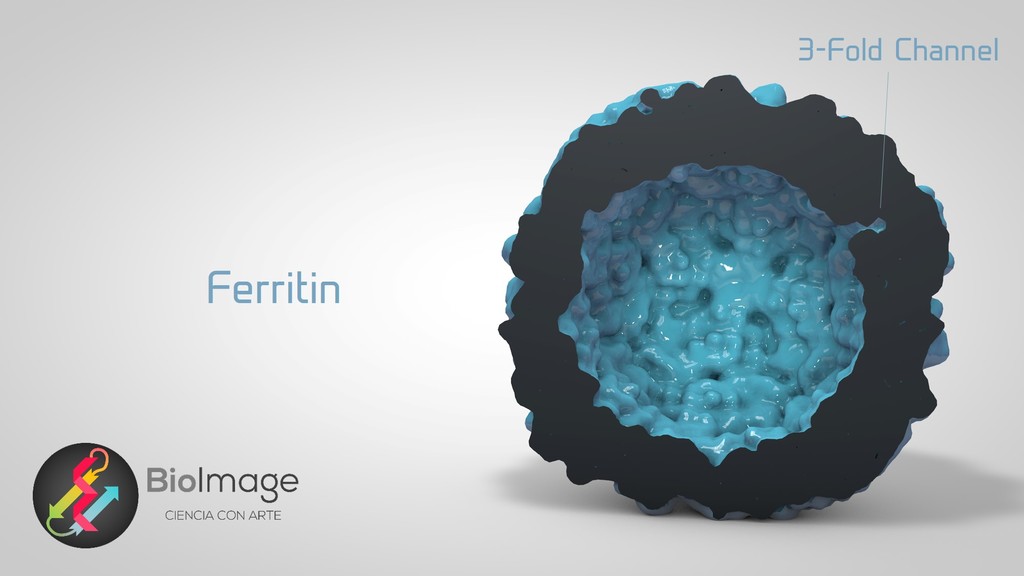
Ferritin - The Cellular Iron Storage
thingiverse
The Crucial Role of Iron in the Body. Iron is necessary for oxygen transport in the blood. Recall that iron is the central atom of the heme group, a metal complex that binds molecular oxygen (O2) in the lungs and carries it to all of the other cells in the body (e.g., the muscles) that need oxygen to perform their activities. Without iron in the heme group, there would be no site for the oxygen to bind, and thus no oxygen would be delivered to the cells (which would result in the cells dying). In addition to hemoglobin, other important proteins in the body that contain heme groups (and therefore contain iron) include myoglobin, which takes oxygen from hemoglobin and allows the oxygen to diffuse throughout the muscle cells, and the cytochromes, which supply the body with its energy currency. Other proteins, such as those needed for DNA synthesis and cell division, also rely on iron. Furthermore, iron is used to help produce the connective tissues in our body, some of the neurotransmitters in our brain, and to maintain the immune system. Hence, iron is necessary for allowing the cells that need oxygen to obtain O2, for supplying the body with a reliable source of energy, and for maintaining several other important structures and systems in the body. Ferritin: The Iron-Storage Protein. How does the body regulate the amount of iron? Fortunately, most of us are able to maintain appropriate levels of available iron in the body (enough available iron to ensure an adequate supply of hemoglobin, but not so much as to produce toxic effects), even if our iron consumption does not always exactly match the body's iron loss. Ferritin (Figure 1) is the key to this important control of the amount of iron available to the body. Ferritin is a protein that stores iron and releases it in a controlled fashion. Hence, the body has a "buffer" against iron deficiency (if the blood has too little iron, ferritin can release more) and, to a lesser extent, iron overload (if the blood and tissues of the body have too much iron, ferritin can help to store the excess iron).
With this file you will be able to print Ferritin - The Cellular Iron Storage with your 3D printer. Click on the button and save the file on your computer to work, edit or customize your design. You can also find more 3D designs for printers on Ferritin - The Cellular Iron Storage.
